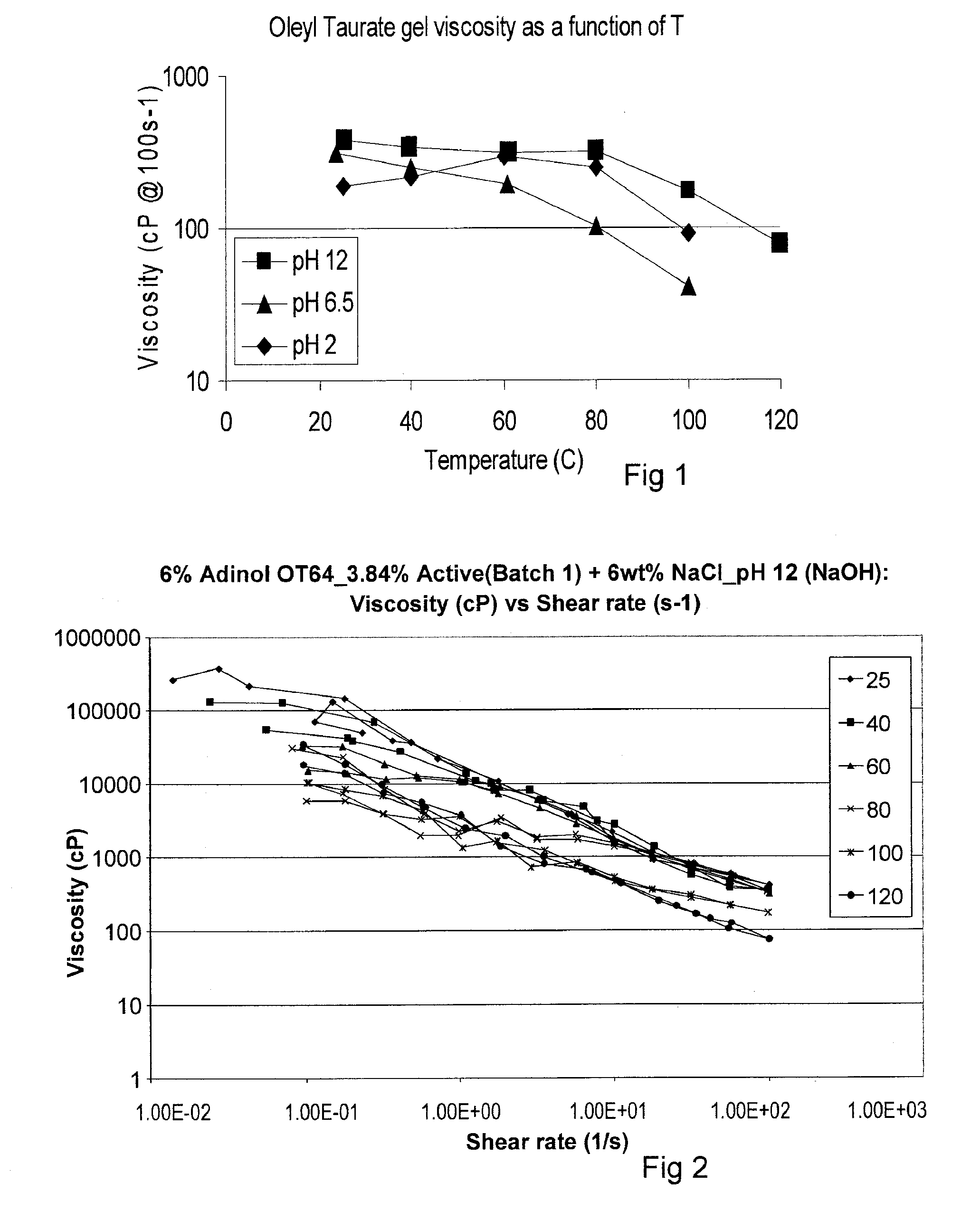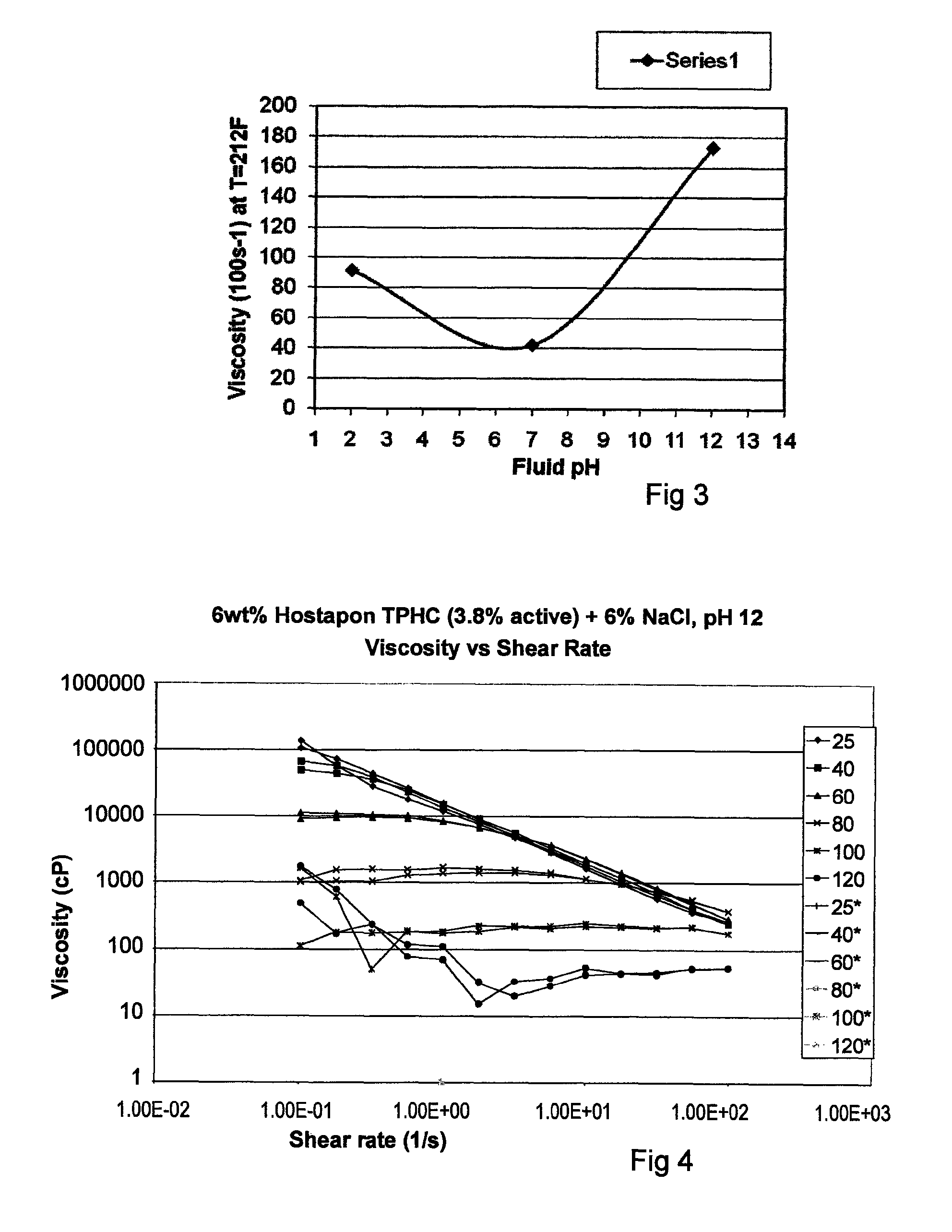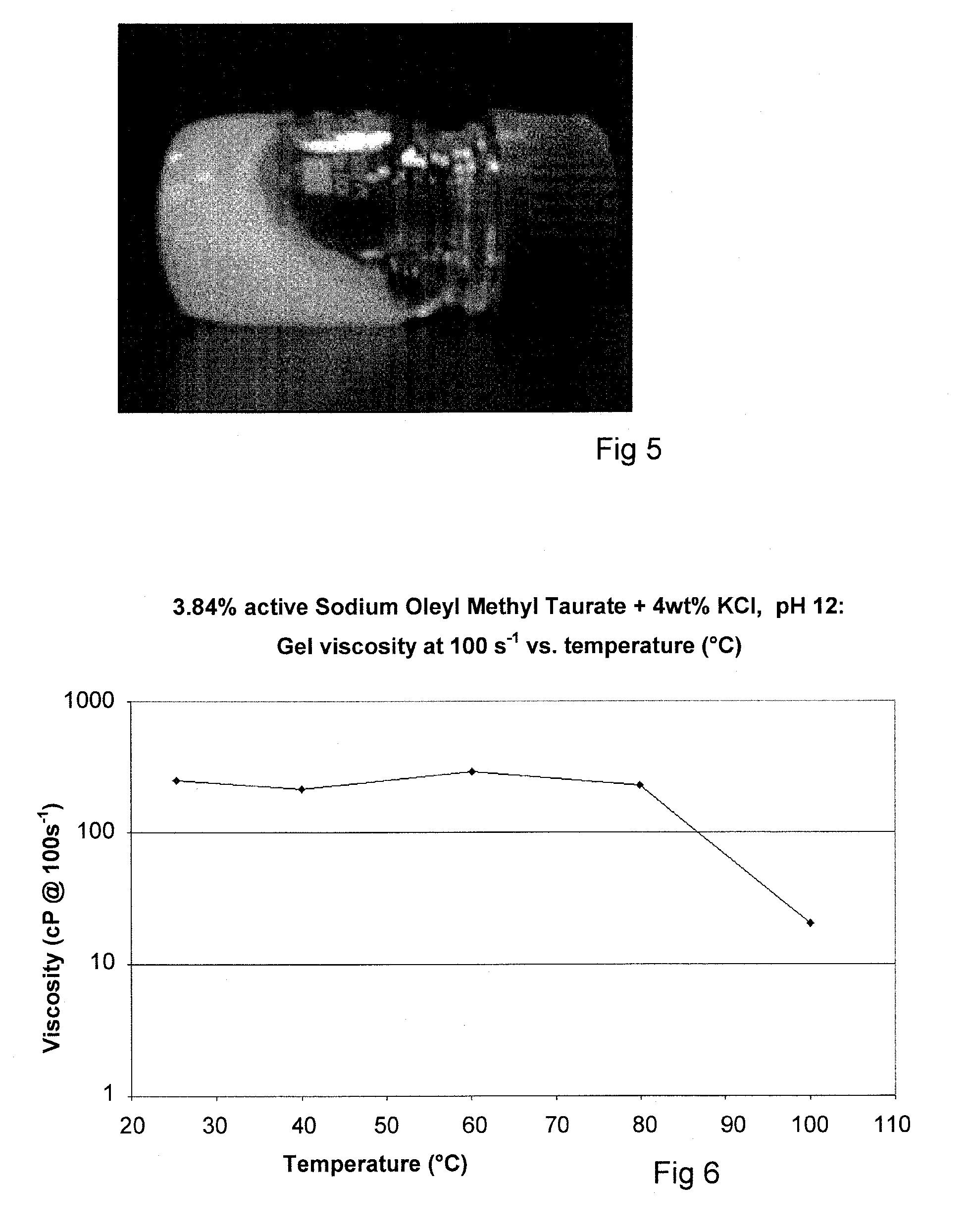Viscoelastic compositions
a technology of viscoelastic composition and composition, which is applied in the directions of sealing/packing, transportation and packaging, and well accessories, etc., can solve the problems of inability to form viscoelastic compositions, inability to use hydraulic fracturing applications, and large micelle structures that are easily destroyed, and achieve high viscosity
- Summary
- Abstract
- Description
- Claims
- Application Information
AI Technical Summary
Benefits of technology
Problems solved by technology
Method used
Image
Examples
Embodiment Construction
[0087]As already stated above, the present invention provides, in one aspect, a wellbore fluid containing an anionic viscoelastic surfactant of formula I:
R—X—(CR5R6)m—SO3−
in which:
[0088]R is a saturated or unsaturated, linear or branched aliphatic hydrocarbon chain comprising from 6 to 22 carbon atoms, including mixtures thereof and / or optionally incorporating an aryl group;
[0089]X is —(C═O)N(R7)—, —N(R7)(C═O)—, —N(R7)—, —(C═O)O—, —O(C═O)— or —O(CH2CH2O)p— where p is 0 or an integer of from 1 to 5;[0090]R5 and R6 are the same or different and are each independently hydrogen or a linear or branched saturated aliphatic hydrocarbon chain of at least 1 carbon atom or a linear or branched saturated aliphatic hydrocarbon chain of at least 1 carbon atom with one or more of the hydrogen atoms replaced by a hydroxyl group; or
when X is —N(R7)(C═O)— or —O(C═O)—, the group (CR5R6) may include a COO− group;[0091]R7 may be hydrogen, a linear saturated aliphatic hydrocarbon chain of at least 1 car...
PUM
| Property | Measurement | Unit |
|---|---|---|
| frequency | aaaaa | aaaaa |
| phase angle | aaaaa | aaaaa |
| temperature | aaaaa | aaaaa |
Abstract
Description
Claims
Application Information
 Login to View More
Login to View More - R&D
- Intellectual Property
- Life Sciences
- Materials
- Tech Scout
- Unparalleled Data Quality
- Higher Quality Content
- 60% Fewer Hallucinations
Browse by: Latest US Patents, China's latest patents, Technical Efficacy Thesaurus, Application Domain, Technology Topic, Popular Technical Reports.
© 2025 PatSnap. All rights reserved.Legal|Privacy policy|Modern Slavery Act Transparency Statement|Sitemap|About US| Contact US: help@patsnap.com



